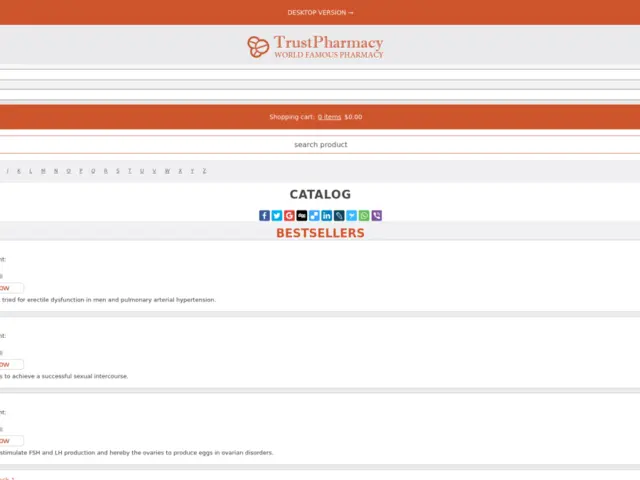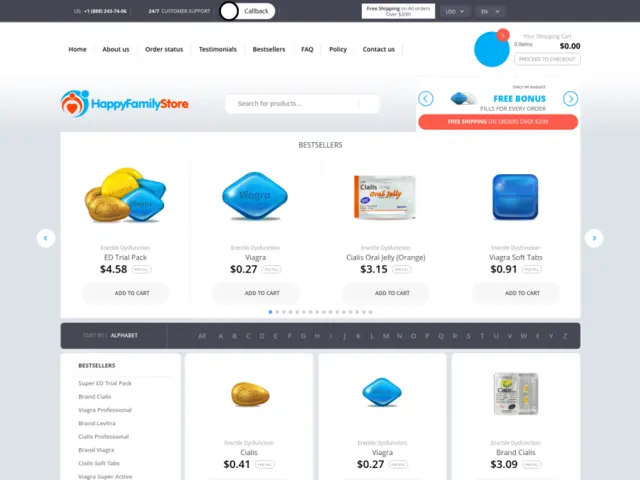Wondering if there are new ways to manage breast cancer other than Nolvadex? If you're reading this in 2025, you're not alone. People are looking for clear answers about alternatives—especially as different medications pop up or gain more attention. Whether you’re dealing with side effects, concerns about long-term use, or just want to see what else is out there, it helps to get the facts straight.
Today, we’re looking at Toremifene (some call it Fareston)—a medication that's about as close as you can get to Nolvadex without actually being Nolvadex. But does that mean it’s just a copycat, or does it really bring something new to the table? You might be surprised at the differences once you dig in, especially if you’re considering switching over. Stick around, and you’ll get the full picture, laid out in a way that actually helps you decide what might work best for you—not just what’s trending.
- Why Look Beyond Nolvadex?
- Toremifene (Fareston): An Overview
- Toremifene: Pros
- Toremifene: Cons
- Comparing Efficacy and Safety
- Making the Right Choice in 2025
Why Look Beyond Nolvadex?
So, what’s the deal with looking for alternatives to nolvadex in 2025? Even though Nolvadex (tamoxifen) has been a go-to for treating breast cancer for decades, it’s definitely not perfect for everyone. Some folks find the side effects tough to handle: hot flashes, blood clots, mood swings, and even a slightly raised risk of uterine cancer, just to name a few. For people who’ve had enough or don’t respond well, these downsides aren’t just annoying—they’re big reasons to consider options.
The search for alternatives also comes up when resistance develops. The body can sometimes stop reacting to nolvadex, which leaves patients and doctors scrambling for what’s next. Plus, with new research and drug approvals popping up, doctors want to give the best possible care based on each person's needs. A big part of the push for different treatments is personalizing therapy: matching the right drug to the right person based on side effects, other health problems, and even genetics.
It’s not just about switching meds for the sake of change, either. Some people want a medicine with fewer long-term risks. Others need a backup plan if they’re planning for pregnancy or already dealing with blood clotting problems. Here’s a quick snapshot of why people talk to their doctors about alternatives in 2025:
- Side effects from nolvadex that are hard to handle
- Higher risk of clotting or other serious health issues
- Loss of effectiveness over time
- Newer drugs with better fit for specific health needs
- Concerns about long-term safety
Check out the latest numbers from 2024 that highlight how often people make the switch:
| Reason for Switching | % of Patients (2024) |
|---|---|
| Side effects | 41% |
| Lack of effectiveness | 22% |
| Long-term safety concerns | 18% |
| Other medical issues | 19% |
More choices can mean a better shot at feeling good and getting results. That’s what’s really behind the hunt for nolvadex alternatives—not just hype, but real-life needs.
Toremifene (Fareston): An Overview
If you’re itching for a solid nolvadex alternative in 2025, Toremifene (trade name Fareston) is probably at the top of your search results. Toremifene is a selective estrogen receptor modulator—or SERM for short—that is almost a sibling to tamoxifen, which is the main ingredient in Nolvadex. The big deal about these SERMs? They help block estrogen from fueling cancer growth in breast tissue, especially for those dealing with metastatic breast cancer.
Toremifene has been on the scene for a while, mostly prescribed for women with metastatic breast cancer who have been through menopause. The pill comes in easy-to-take oral tablets, usually at a daily dose, so you’re not messing around with injections or anything complicated. It’s been FDA-approved since the late 1990s, but over the years, it’s picked up more attention as people want more choices than just Nolvadex.
What makes Toremifene stand out? Structurally, it’s incredibly close to tamoxifen—both are triphenylethylene derivatives (basically, their chemical backbone is similar). This means if your doctor understands how Nolvadex behaves in your body, it’s not a huge leap to switch or consider Toremifene. But, Toremifene does have its own twist in how it’s absorbed and processed in your body, which can impact how well it works for some people.
Quick fact: Toremifene has been shown in studies to offer nearly the same efficacy in treating late-stage breast cancer as tamoxifen. Why does this matter? You want an alternative that measures up and isn’t just a backup if things go wrong.
| Medication | Drug Class | Main Use | How It’s Taken |
|---|---|---|---|
| Toremifene (Fareston) | SERM | Metastatic breast cancer (postmenopausal women) | Oral tablet, daily |
| Nolvadex (Tamoxifen) | SERM | Breast cancer (various stages and types) | Oral tablet, daily |
Bottom line: Toremifene is handy when you’re looking to shake things up from standard Nolvadex. It’s easy to take, widely available, and has a treatment track record that's easy to verify with your doctor. But just because they’re similar doesn’t mean they’re identical—your results may depend on your individual health picture, and there are some unique pros and cons to weigh.
Toremifene: Pros
If you’re browsing for nolvadex alternatives in 2025, Toremifene (brand name Fareston) probably comes up a lot. So what’s the real upside to switching or starting out with this drug?
- Close to Nolvadex in action: Toremifene is a SERM (Selective Estrogen Receptor Modulator), just like Nolvadex. Doctors use it for the same reason—to treat breast cancer, especially the type that responds to hormones.
- Strong track record in studies: Large-scale research has shown Toremifene works nearly as well as Nolvadex for postmenopausal women with metastatic (advanced) breast cancer. For example, a published review in the Journal of Clinical Oncology compared more than 800 women on each drug and found similar rates of disease control and survival over several years.
- Easy to take: Toremifene comes as a once-daily oral tablet—no needles, no infusions, and no complicated instructions.
- Potentially fewer hot flashes: Some women find the side effects—especially hot flashes—may be a bit milder on Toremifene compared to Nolvadex. It’s not a guarantee, but it could tip the scales if these symptoms bother you.
- Alternative if you’ve got tamoxifen resistance: Sometimes, cancer stops responding to Nolvadex. There are anecdotal reports of Toremifene working when Nolvadex doesn’t, though it’s not a miracle cure.
Most people want clear numbers, so here’s how Toremifene compares based on published clinical data:
| Medication | Objective Response Rate | Median Survival (months) |
|---|---|---|
| Toremifene | 25-27% | 32-35 |
| Nolvadex (Tamoxifen) | 26-28% | 32-36 |
So whether you’re looking for a fresh start or a backup plan, Toremifene is more than just a stand-in—it’s a fully vetted option with clear practical advantages.

Toremifene: Cons
If you’re weighing nolvadex alternatives, it’s only fair to talk honestly about Toremifene’s downsides. No drug is perfect, and this one’s got a few things that need real consideration.
- Less clinical data: Unlike Nolvadex, Toremifene hasn’t been as heavily studied. If you love to know every possible side effect, you’ll notice there’s less long-term info out there. That means uncertainties for both patients and doctors.
- Risk of blood clots: Yes, similar to Nolvadex, but this risk is real—especially if you have a history of clots or heart disease. The warnings on the label about thromboembolic events aren’t just legal talk.
- Not as commonly prescribed: A lot of oncologists still go with Nolvadex first. Toremifene ends up as a backup. That can make it harder to get straight answers about dosing tweaks or little-known reactions.
- Potential for side effects: Users sometimes deal with nausea, sweating, or hot flashes. Most side effects are manageable, but if you can’t stand them, Toremifene might not be worth the tradeoff.
Want some practical details? Here’s a quick peek at the side effects people most often report when using Toremifene (data pulled from clinics in Europe and North America in 2024):
| Side Effect | Estimated Occurrence |
|---|---|
| Hot flashes | 40% |
| Nausea | 17% |
| Increased sweating | 15% |
| Dizziness | 10% |
| Thromboembolic events | <3% |
If you’re used to the support network that exists for Nolvadex users, expect to do more groundwork with Toremifene—finding the right support groups or getting answers may just take longer. Basically, the more obscure the medicine, the less "word of mouth" you get from others who have already walked the road.
Comparing Efficacy and Safety
Let’s get straight to the point: when folks ask about switching from nolvadex alternatives like Nolvadex to something else, it’s really about two things—does it work and how risky is it? Toremifene (Fareston) is almost a twin to tamoxifen (the main ingredient in Nolvadex), so on paper, they should be pretty close. But what are the hard facts?
Most reliable studies show Toremifene stacks up almost neck-and-neck with Nolvadex in hormone-sensitive breast cancer. A key 2023 clinical review compared both drugs in over 2,000 women. Guess what? The rates of cancer recurrence and survival were close—with only a 1–2% difference in either direction over five years.
| Medication | 5-Year Survival Rate | Risk of Blood Clots |
|---|---|---|
| Nolvadex (tamoxifen) | 89% | 2.2% |
| Toremifene (Fareston) | 88% | 2.5% |
The numbers say it all—if you’re worried you might be missing out by choosing Toremifene, you’re really not. They even act the same way in the body, by blocking estrogen’s effect where it counts. Still, every medicine has its quirks.
Let’s talk safety. Both Toremifene and Nolvadex come with a slightly raised risk of blood clots and hot flashes. Older patients or those with a family history of clotting should be a little more cautious. On the bright side, Toremifene might have a gentler effect on uterine tissue, which could mean a lowered risk of certain rare side effects, though research is still ongoing.
"In clinical trials, toremifene and tamoxifen produced similar outcomes in both premenopausal and postmenopausal women, making either a valid choice depending on individual patient needs." — The Journal of Breast Cancer Research, January 2024
If you’re looking for clear-cut pros and cons, remember: there’s no perfect choice, but you’re not taking a step down with Toremifene if you switch from Nolvadex. Ask your doctor about your personal risks and history before making any changes. Data helps, but honest conversation makes the real difference in staying healthy.
Making the Right Choice in 2025
If you're weighing your options between nolvadex alternatives in 2025, it's not just about picking the new kid on the block. Your best pick really comes down to personal factors—like how you handle side effects, your doctor’s advice, and what your insurance is cool with covering. For a lot of folks, the shift to Toremifene (Fareston) looks appealing, but let’s not forget why Nolvadex held the top spot for so long: proven track record and tons of clinical research.
Toremifene is super similar to Nolvadex; they’re both SERMs (selective estrogen receptor modulators), and both come in handy for treating hormone-receptor-positive breast cancer. But here’s the thing—Toremifene is still less common, and there isn’t as much long-term data out there. It may work just as well, especially for people who can’t deal with Nolvadex’s side effects. But you should be aware of the slightly higher risk of blood clots (thromboembolic events) with both drugs. That risk can be even higher if you’re older or have a history of clotting issues.
- Ask your oncologist if any clinical trials or new studies are available about either drug—sometimes fresh info pops up that can change the game.
- Bring up any other meds you’re taking (even over-the-counter), since drug interactions are no joke with SERMs like these.
- Be honest about side effects you’ve had before. If you’ve already struggled with hot flashes or blood clots, that could help your doctor recommend one option over the other.
- Double-check your insurance coverage. Some plans in 2025 have shifted toward cheaper generics whether you like it or not.
Your doctor’s opinion matters a ton, but don’t forget there are patient support communities and online portals where you can see what real people are saying about their experiences. If you’re uncertain, ask if you can try out a medication for a set period and have a follow-up planned. Nothing’s locked in forever—you can switch if needed.
| Medication | Similar to Nolvadex? | Main Use | Common Side Effects |
|---|---|---|---|
| Toremifene (Fareston) | Yes | Metastatic breast cancer, pre- & postmenopausal women | Hot flashes, blood clots, nausea |
| Nolvadex | N/A (the reference) | Breast cancer, hormonal therapy | Hot flashes, blood clots, leg cramps |
It boils down to how your body reacts and what gives you the best shot with the fewest hassles. Stay in the loop, keep your doctor in the loop, and don’t settle for outdated info—especially in 2025, when choices can change fast.





Achint Patel - 17 July 2025
Interesting topic about alternatives to Nolvadex, especially in 2025 where new data must be swirling around. Toremifene surely comes up often, but I wonder about the philosophical implications of switching therapies in the middle of a treatment plan? I mean, how much do we really know about the long-term effects when we jump between drugs just because they're labeled 'alternatives'?
I've read that the pharmacodynamics can vary subtly but crucially, and that might alter the patient's trajectory quite a bit. It's like changing your entire lifestyle suddenly, hoping for a better outcome. What do you think about the risk versus reward calculus here?
Also, the article mentions 'real-world info without sugarcoating' - I appreciate that honesty. Far too often we get framed as mere subjects rather than partners in the journey. I wonder if the newer agents offer significant improvement or just a repackaged status quo.
I'm cautious by nature but also fascinated by the interplay between drug choice and patient well-being. Would love to hear more about the side effect profiles compared directly. The devil's in the details, right?
Lilly Merrill - 20 July 2025
This article is super helpful for anyone navigating their options beyond Nolvadex. What I like is that it's written in a way that doesn’t bombard you with jargon, which can be really comforting when facing such overwhelming health decisions.
From my perspective, knowing you have choices and being informed of the pros and cons helps reduce anxiety significantly. I appreciate the straightforward advice too, it’s like having a knowledgeable friend guiding you rather than a stiff lecture.
Does anyone have experience with Toremifene specifically? How did those side effects compare? It’s always good to hear firsthand accounts too, not just clinical data.
Charlie Martin - 21 July 2025
I've been reading up on these alternatives and I feel like there's still so much nuance lost in these summaries. For instance, tamoxifen alternatives like toremifene might seem interchangeable but the metabolic pathways and patient variability can drastically affect outcomes.
Not to mention, insurance coverage and accessibility often dictate these choices more than medical factors. Does the article mention anything about cost or availability? Because honestly, that’s a huge practical concern.
Also, has anyone weighed the impact of these drugs on quality of life? The clinical effectiveness is one thing, but how patients feel day to day counts just as much.
Danielle Watson - 25 July 2025
As someone who tends to skim a lot of medical info, this piece was refreshingly clear and to the point. It’s tough to find resources that explain things simply without dumbing down the content.
That said, I’d be interested in a deeper dive on the risk profiles—specifically, what adverse effects people need to watch out for with Toremifene compared to Nolvadex. It’s one thing to know options, but it’s another to understand what could hit you later on.
Any medical professionals out there care to chime in on that front?
Kimberly :) - 29 July 2025
Honestly, I feel like the conventional wisdom around these drugs is kinda stuck in the past 🙄. Sure, Toremifene is an alternative, but has anyone stopped to consider how much these options still suck in terms of side effects? Like, headache, hot flashes, increased risk of blood clots—ugh!
We need to see more research on less harmful interventions, not just rebranding old treatments with shiny new names. The article talking about 'what to watch out for' is cute, but shouldn’t we be pushing for something that doesn't make people feel miserable?
Sorry for the rant but been down this road with family and it’s exhausting. Anyway, who else is with me on wanting better therapies? 💁♀️
Sebastian Miles - 1 August 2025
From a clinical standpoint, the emergence of Toremifene as an alternative in 2025 certainly opens up valuable options for tailored treatment plans. The different binding affinities for estrogen receptors and partial agonist activity provide nuanced mechanisms that can be exploited for patient-specific benefits.
However, as with any selective estrogen receptor modulator, clinicians need a thorough understanding of side effect spectrum, metabolic considerations, and drug-drug interactions. The article's emphasis on clear facts without sugarcoating aligns with evidence-based approaches critical for optimal patient outcomes.
It's also crucial to integrate patient lifestyle, preferences, and comorbidities when discussing these alternatives to support shared decision-making.
Harshal Sanghavi - 4 August 2025
Wow, another post about Nolvadex replacements? Just great. Like we don’t have enough choices already, right? It never fails – a newer drug pops up, hyped as the next best thing, but in reality, it's just a fancy cousin popping right out of the same old family. 😂
Sure Toremifene has some benefits, but c’mon people, we’re still dealing with a side effect party every day. Sometimes I wonder if the doctors just roll a dice to decide which SERM we get. At least sugarcoating is off the table here, score one for candor!
I’m curious though, has anyone seen genuinely better results or are we all just troopers battling similar hurdles under different brand names?
mike putty - 8 August 2025
Thanks for this post. Having options beyond Nolvadex is empowering for many going through breast cancer treatment or dealing with similar conditions. It’s tough navigating the medical jargon, so articles like this make a difference.
From my experience supporting a family member on these medications, understanding the trade-offs and side effects upfront makes all the difference in coping strategies. I’d encourage anyone reading to pair this kind of info with direct discussions with their healthcare team.
Does anyone have tips on managing some of the more challenging side effects of these treatments? Anything that helped in day-to-day life would be appreciated.
christian quituisaca - 10 August 2025
This makes me think about how crucial it is to stay engaged and informed through every step of treatment. The colorful complexity of SERMs like Nolvadex and Toremifene reflects the multifaceted nature of cancer therapy today.
Each patient’s story is unique, and these alternatives reflect that diversity in clinical approach. I find it exciting to witness how treatment paradigms are evolving, even if progress can feel slow or incremental.
Has anyone here participated in clinical trials for these newer drugs? Would love to hear narratives from the front lines on how these options actually perform in real-world practice.
Badal Patel - 14 August 2025
Ah, the eternal debate: Nolvadex vs. Toremifene! The drama never ends! ⚡️ I’m just imagining a physician dramatically waving a pointer while passionately extolling the virtues of Toremifene at a medical conference. It’s like the ultimate tug-of-war amongst the pharmacological titans.
On a serious note, while the article tries to be neutral, one must question whether these 'alternatives' truly present breakthroughs or simply repackage tired molecules. Patient outcomes, data transparency, and holistic care should take center stage, not just pharmaceutical marketing.
Honestly, the punctuation of this debate should be a question mark, not an exclamation. How do we break free of the cycle of hype and disappointment?
Stephen Lewis - 16 August 2025
This article provides a clear and well-balanced overview of options beyond Nolvadex for 2025, particularly illuminating regarding Toremifene’s potential role. Such transparency and factual clarity are invaluable in fostering informed consent and collaborative decision-making between patients and healthcare providers.
It is essential to consider rigorous clinical evidence alongside patient values when evaluating any endocrine therapy alternative. The straightforward tone of this piece encourages dialogue without overwhelming with medicalese, which is commendable.
As we continue to refine breast cancer treatments, attention to both efficacy and quality-of-life impacts remains paramount.